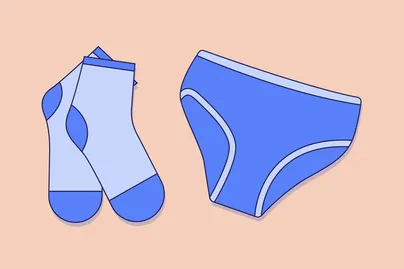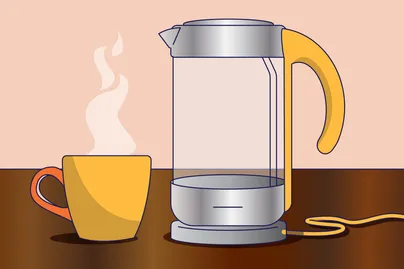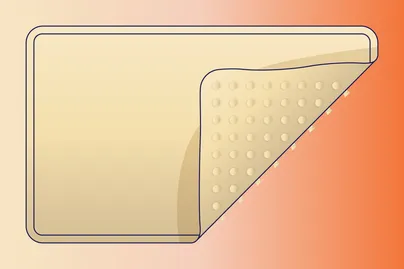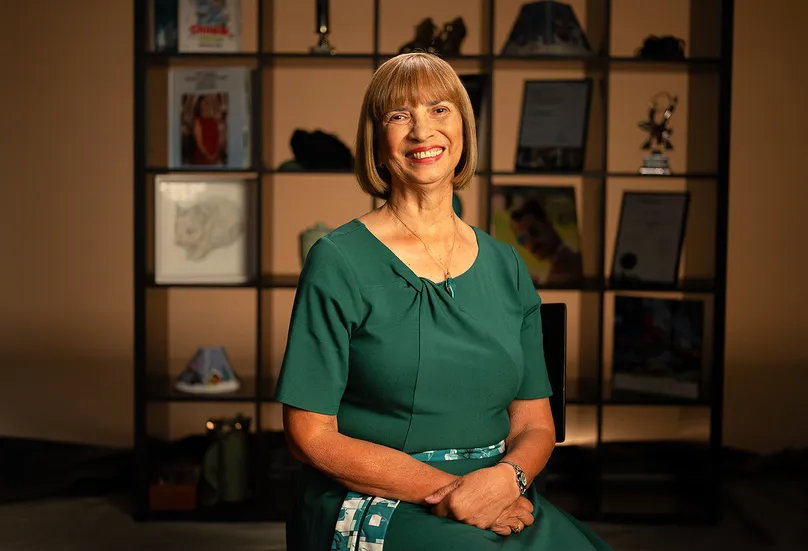
This video follows Jilska's story, including her recovery from back surgery, as well as how she stays active and independent in retirement.
The importance of staying independent after an injury
Experiencing an injury can be a challenging time. This is especially the case when it affects your ability to manage daily tasks. Maintaining independence is key to your health, confidence, and quality of life. Losing the ability to complete routine activities on your own can feel frustrating. Some good news is that using assistive products can help you continue living life on your terms.
If you are coming home after hospital, you may have been given some assistive products to assist with your recovery from injury or illness. This may be a walking aid for mobility, a shower chair or grab rails for safer showering, and so on. This type of assistive product is prescribed by your allied health therapy team.
This article will look at how low-cost assistive products that you can buy yourself can also help you stay independent after an injury.
How low-cost assistive products can help
Low-cost assistive products are simple and affordable aids that are easy to set up and use. These are generally considered low-risk and available from local suppliers and retail stores such as Bunnings, Spotlight, Kmart, and more.
By using the right assistive technology, you can:
- Prevent unnecessary strain on your body during recovery
- Reduce the risk of falls and further injuries
- Maintain control over daily activities without relying on others
- Improve confidence and mental health by staying active and independent
LiveUp provides information and advice on how low-cost assistive technology devices can improve your quality of life and help you stay independent for longer.
LiveUp is powered by a not-for-profit and doesn’t make any money from these suggestions.
Case studies on assistive products to help with recovery
There are many types of assistive products designed to support different areas of daily life, depending on your struggles. Let’s look at 2 case studies where people found what worked for them.
Products Jilska used during her recovery from back surgery
Jilska from the video above had to find products to keep her active and independent after back surgery. Simple tasks like doing the laundry, bending, and picking things up were painful while she was still recovering.
- A laundry trolley meant she no longer had to carry heavy baskets, reducing strain on her back.
- A long-handled grabber helped her pick up dropped items without bending.
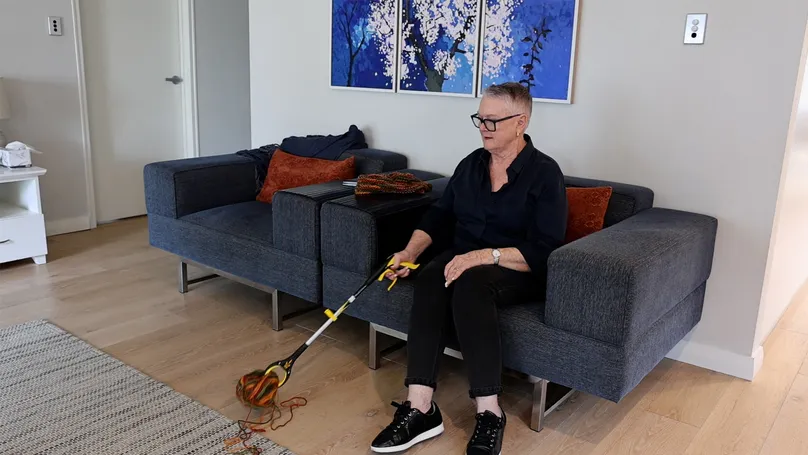
- A sitting stool helped her avoid bending while doing tasks such as emptying the dishwasher.
With the right tools, Jilska could find confidence in managing her daily tasks again. She’s proof that with the right tools, you can stay independent and enjoy life at home.
More examples of useful products
Here are some other examples of assistive products that you can use if you have difficulty bending or suffer from pain:
- Sock aids assist in putting on socks without bending over. These are beneficial for those with back, hip, or knee issues.
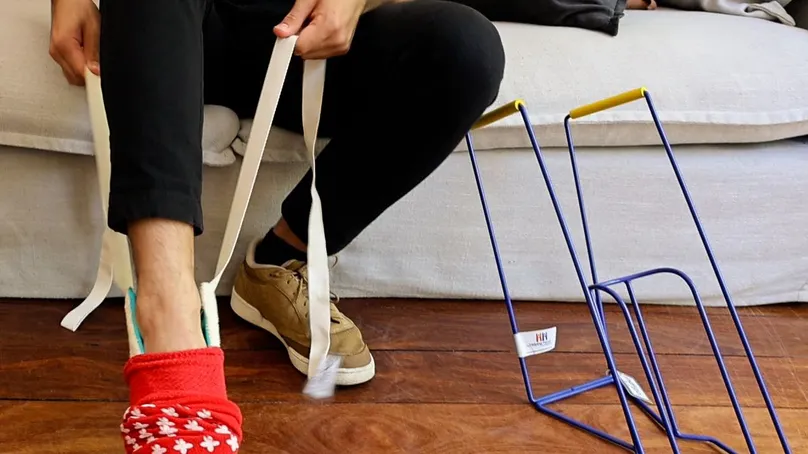
- A long-handled shoehorn makes it easier to put on shoes without excessive bending or twisting.
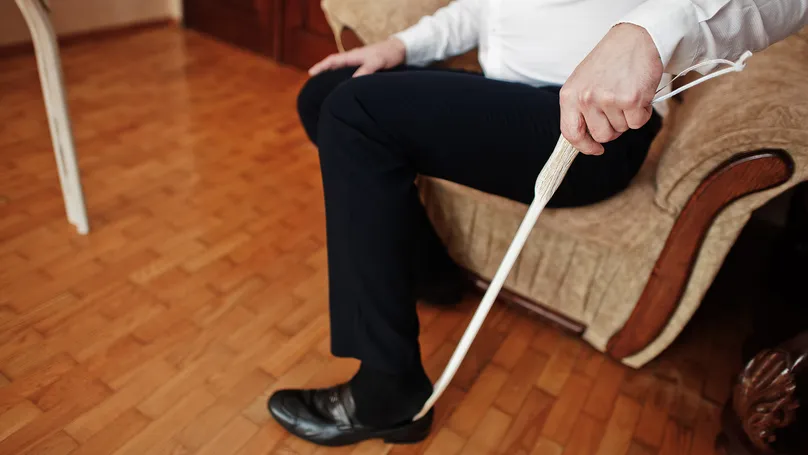
- Heat packs can provide pain relief for your sore muscles and joints. While there is not enough evidence that a heat pack works to reduce chronic pain, there is some evidence for its effectiveness for acute pain 2. If you are suffering from significant pain, we recommend you seek advice from a medical professional.
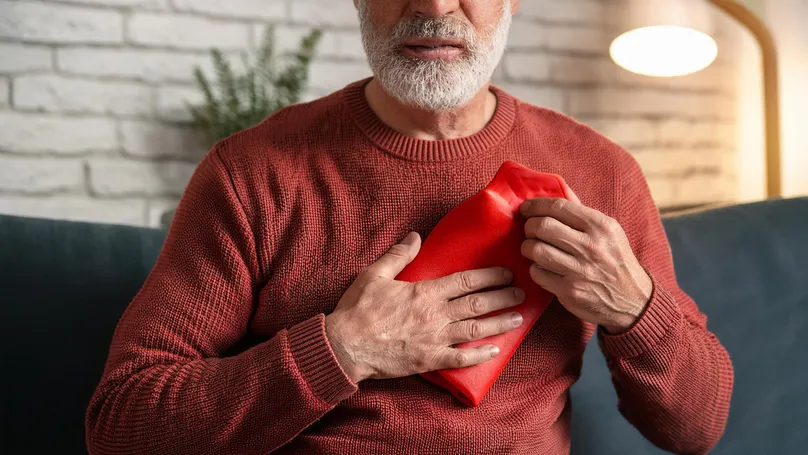
Assistive technology that helped Sharon when she broke her arm
What would you do if you have lost the use of an arm? What if you have difficulty with your hand strength? Let’s read how Sharon used assistive products to continue doing what she loves even after she broke her arm.
Sharon, 61, loves cooking for her family. Unfortunately, she tripped over while walking her dog, broke her left arm, and ended up in a cast. Everyday tasks in the kitchen became hard. She didn’t want to stop cooking or rely on others to help her. So, she looked for assistive technology that could make things easier while her arm healed.
- Sharon started using a chopping board with spikes to hold food in place so she could cut with one hand.
- She used jar openers and electric can openers so she could open things by herself.
- Sharon also moved things in her kitchen to make them easier to reach.
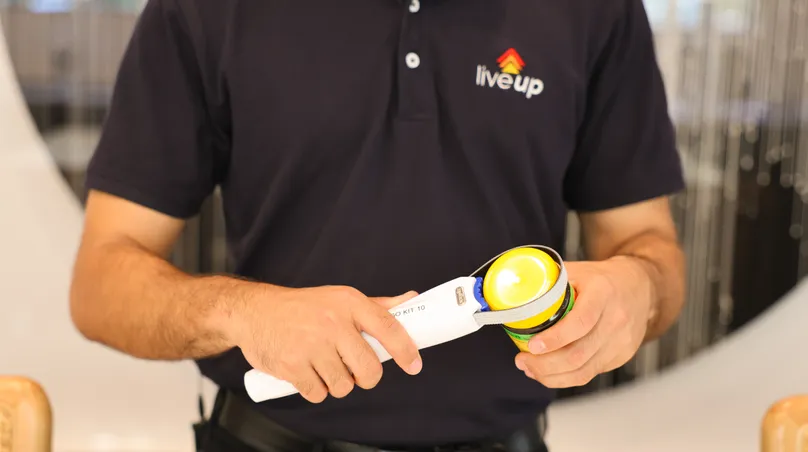
By using assistive products and rearranging her environment to suit her needs, Sharon was able to stay active in her kitchen during her recovery.
More examples of everyday assistive products
Here are some other low-cost items you could use around the home while recovering from injury:
- A kettle tipper supports your kettle and makes it easier to pour hot water. Another option is a tipping kettle.
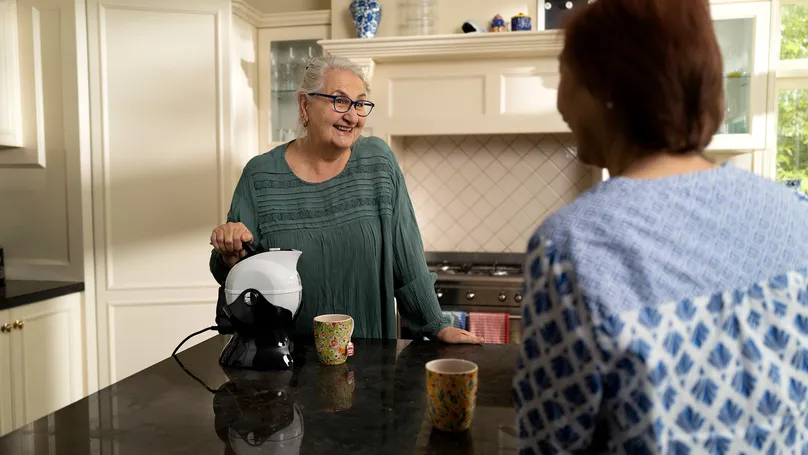
- A tap turner fits over your existing tap to provide extra leverage to turn the tap on and off.
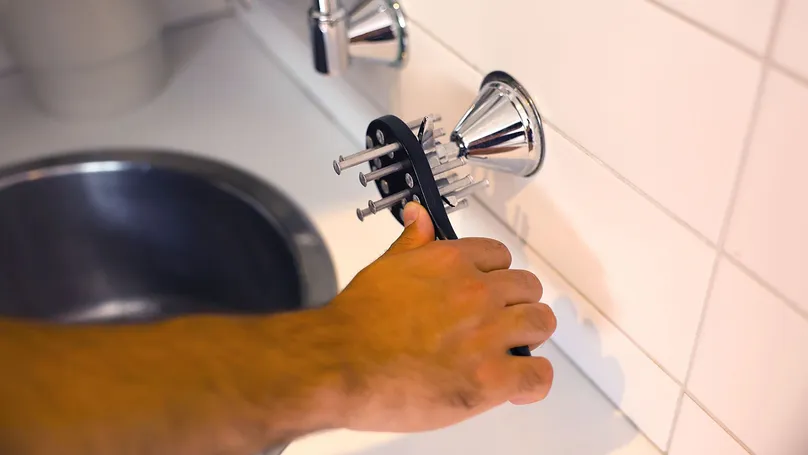
- A button hook and zipper pull helps with pulling zips up and down, and fastening buttons.
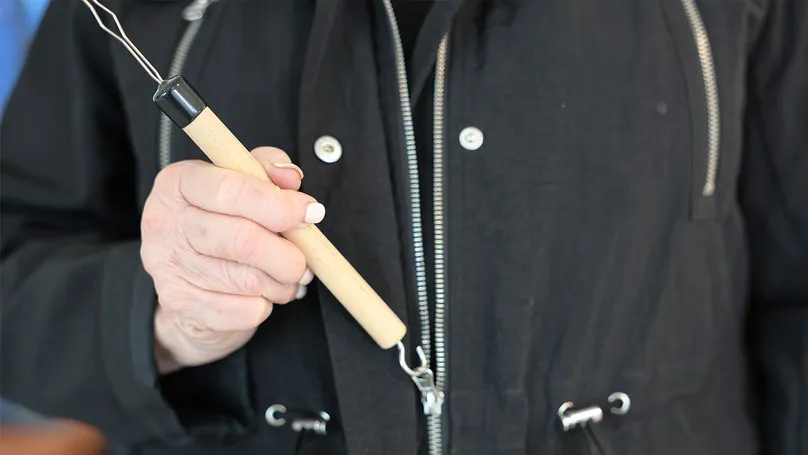
- A non-slip bath mat provides a stable surface to stand on when wet and a non-slip placemat is designed to stop plates, bowls, and cups from moving or sliding around.
How to choose the right assistive products for you
Selecting the right assistive products depends on your individual needs, lifestyle, and recovery goals. Here are some steps to help you find the best options:
- Consider your daily routine. Think about the activities you find most challenging and look for products designed to make those tasks easier.
- Trial before you buy. Many assistive product providers allow you to trial items before purchasing to ensure they meet your needs. However, keep in mind that if you are purchasing a product from a mainstream retailer, they may offer this service.
- Ensure quality and safety. Choose products that are sturdy, durable, and designed for long-term use.
- Consult an allied health professional. An occupational therapist or physiotherapist can assess your needs and recommend the most suitable products based on your condition and home environment.
Where to buy or rent assistive products
There are several ways to access assistive products in Australia. Whether you are looking to purchase or rent, there are numerous options available, including:
Retail stores
Many of the assistive products recommended by LiveUp are available for purchase at local retail stores. Remember, LiveUp doesn’t make any money from recommending these products. LiveUp is a free information service only.
Online independent living stores
Websites specialising in independent living aids provide a convenient way to browse and purchase products from home. Look for reputable sites that offer product reviews and customer support.
Equipment libraries and rental services
If you only need a product for a short period, renting from an equipment library can be a cost-effective solution. Some community organisations and health services offer rental options for items like wheelchairs, walkers, and shower stools.
Ask NED
You can also browse the National Equipment Database (NED) for assistive products and retailers.
Remember to consult an allied health professional if you have difficulty with your mobility or feel unsafe doing your daily activities around your home.
Funding and support options
- My Aged Care provides support and funding for eligible older people to help them remain independent at home.
- The National Disability Insurance Scheme (NDIS) assists individuals with disabilities in accessing necessary equipment and supports.
Injury doesn't mean the end of independence
Recovering from an injury doesn’t mean giving up your independence. With the right assistive products, you can continue managing daily tasks, stay safe, and regain your confidence. Whether it’s a laundry trolly, an easy-to-use kitchen tool, or a dressing aid, these solutions are designed to support your recovery and enhance your quality of life.
Explore the wide range of products available on LiveUp’s assistive products database to find the right solutions for your needs.
Need advice about assistive technology?
You may benefit from seeing an occupational therapist (OT) for some professional advice. An occupational therapist can help you adapt tasks and find products that suit your needs. Visit Occupational Therapy Australia to find a qualified practitioner in your local area.
If you need more information, take the LiveUp quiz or get in touch with one of our helpful team on 1800 951 971.
References
World Health Organization. Assistive technology. https://www.who.int/news-room/fact-sheets/detail/assistive-technology
MyBackPain.org.au. Heat therapy. https://mybackpain.org.au/treatments/heat-therapy
How to use this information
LiveUp provides free information to help you make informed decisions about your health. This information is for general and educational purposes only, is not intended to provide a comprehensive guide, and does not replace medical advice. Everyone is different, so some of these tips may work better for you than others. You should use your own judgment and seek medical advice when applying this information to yourself, to determine if it is suitable in your circumstances. Your use of, or reliance on, this information is solely at your own risk. Independent Living Assessment Incorporated is not responsible or liable for any injury, loss, or damage caused as a result of your use of, or reliance on, this information.
Download and print this article:
You can print out the PDF and stick it to your fridge or file away the tips to revisit at a later time.
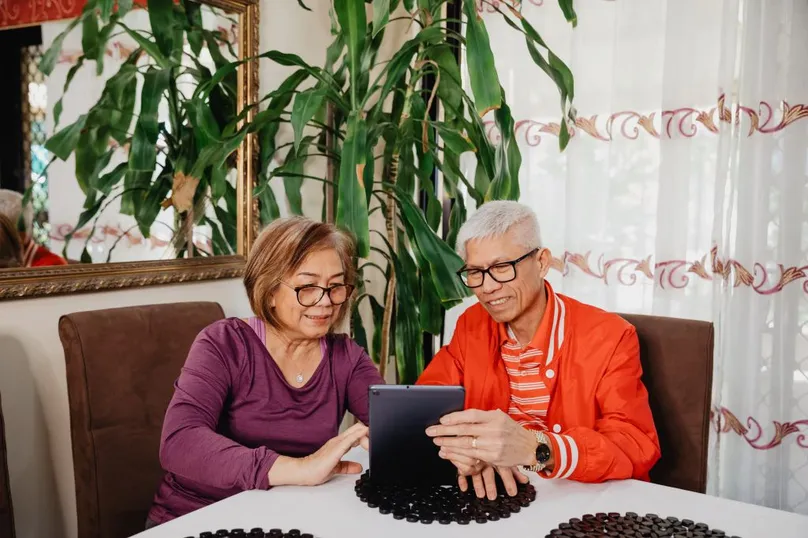
Read more Safety articles
Did you enjoy this article? You may also like reading similar healthy ageing articles.
See all Safety articles